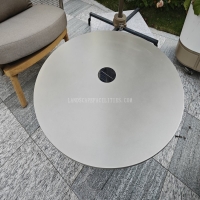Welcome to the website for landscape facilities products and knowledge.
How does the trash can’s design accommodate different waste disposal methods like compacting?
Modern trash can designs have evolved significantly to accommodate diverse waste disposal methods, particularly compacting, which enhances efficiency and sustainability. Here’s how innovative designs achieve this:
1. Built-in Compactors: High-end trash cans feature electric or manual compactors that compress waste, reducing volume and increasing capacity. This is ideal for kitchens or offices with limited space.
2. Segmented Compartments: Smart bins often include separate sections for recyclables, organic waste, and general trash, with compacting options for non-recyclable materials to minimize frequent emptying.
3. Sensor Technology: Automated bins with motion sensors or foot pedals allow hands-free operation, while compacting mechanisms activate when the bin reaches a certain fill level, optimizing waste storage.
4. Durable Materials: Compacting bins are constructed from reinforced plastics or stainless steel to withstand pressure, ensuring longevity and hygiene.
5. Eco-Friendly Features: Some designs integrate odor control, solar-powered compactors, or biodegradable liners, aligning with green waste management practices.
By integrating these features, modern trash cans not only streamline waste disposal but also contribute to environmental conservation by reducing landfill overflow and promoting recycling.
Related search:

Recommendation
Outdoor stainless steel table with solar-powered ambient lighting feature - excellent design.